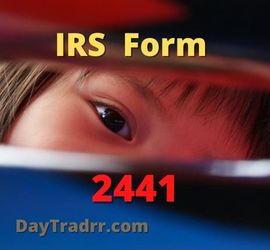What Is IRS Tax Topic 203?
 A refund adjustment is referenced as Tax Topic 203 on your IRS Transcript. Once notified, past due debt can legally be withheld and garnished from your IRS tax refund check. One of the primary reasons that the IRS will offset a refund is in response to the Treasury Offset Program (TOP). The Treasury’s Bureau of the Fiscal Service (BFS) manages this program and collects past-due (delinquent) bills owed to state and federal agencies. The program collects a wide range of late payment types. This includes past-due tax bills, child support payments, unpaid unemployment benefits, and student loan loans.
A refund adjustment is referenced as Tax Topic 203 on your IRS Transcript. Once notified, past due debt can legally be withheld and garnished from your IRS tax refund check. One of the primary reasons that the IRS will offset a refund is in response to the Treasury Offset Program (TOP). The Treasury’s Bureau of the Fiscal Service (BFS) manages this program and collects past-due (delinquent) bills owed to state and federal agencies. The program collects a wide range of late payment types. This includes past-due tax bills, child support payments, unpaid unemployment benefits, and student loan loans.
Past due debt can legally be adjusted or garnished from your IRS tax refund check after a typical notification period of 60-120 days. In some situations, these debts might be offset against social security benefits. This refund garnishment is referenced as Tax Topic 203 on your IRS Transcript through the IRS refund information portal. Also, the portal will provide the adjusted refund payment and date, assuming there are no other offsets (for example, IRS tax code 570). The sums reflected against your refund will appear on your tax transcript. Generally, you can find this when you access the IRS WMR (Where’s My Refund) webpage. It will appear as a refund applied to your non-IRS debt. The amount garnished from your refund is applied to offset the debt.
IRS Tax Topic 203 on IRS Transcript 2022-2023
The Department of Treasury’s Bureau of the Fiscal Service (BFS) issues IRS tax refunds. Moreover, Congress authorizes BFS to conduct the Treasury Offset Program (TOP). Through the TOP program, BFS may reduce your refund (overpayment) and offset it to pay:
- Past Due Child Support – Past-due child support;
- Federal Government Debts – Federal agency non-tax debts;
- State Government Debts – State income tax obligations; or
- Unemployment Debts – Certain unemployment compensation debts owed to a state (generally, these are debts for (1) compensation paid due to fraud, or (2) contributions owing to a state fund that weren’t paid). (Source: irs.gov)
Treasury Department Offset Program
State child support enforcement agencies communicate information with the Treasury Department. This includes information about parents who are delinquent on child payments under the federal Treasury Offset Program. Using this guidance, the agency can intercept federal tax returns and other payments to balance unpaid child support. Your state child support enforcement office will report your unpaid child support to the Treasury Department. In turn, the IRS will deduct the arrears from your tax refund, often called a tax refund seizure. Then, the money will subsequently be transferred to the proper child support agency by the IRS. The same is true for coronavirus stimulus payments. (Source: daytradrr.com)
The Treasury Offset Program (TOP), operated by the Department of the Treasury’s Bureau of the Fiscal Service, is a fully-automated, centralized offset program that intercepts federal and state payments to collect delinquent debts owed to federal and state agencies. Federal agencies must notify TOP of all nontax debts delinquent for more than 120 days. Federal disbursing officials must offset payments to collect such debts. States may offset their payments by entering into reciprocal offset agreements. The Internal Revenue Service (IRS) levies TOP to collect federal tax debts, at its discretion, under separate legal authorities from those authorizing administrative offset. (Source: treasury.gov)
Tax Topic 203 – How Much Was My Refund Reduced or Offset?
The Bureau of Fiscal Service (BFS) will send you an “offset notice” with information about the adjustment. The notice should include the amount owed and the agency to which you owe the debt. Surprisingly, many taxpayers are surprised by the refund adjustment. However, they would have received a letter from the debtor agency at least 60 days before the debt was sent to the IRS to be processed. Regardless, the letter or notification will detail the amount outstanding as well as payment choices, including payment plans.
The notice will provide instructions and options to appeal this payment. Swift action on your part can prevent it from being collected via your refund. However, if you don’t respond or do anything the debt collection is passed on to the IRS to offset your refund. The law requires agencies to send debts to TOP when the debt is 120 days overdue. This is to allow sufficient time to dispute the debt before your refund is garnished. Be aware that if you change your home address or contact details, you might not receive this letter. In that instance, the offset will occur leaving you little if any recourse. On the positive side, your refund will be applied to an outstanding debt thereby reducing the claims against you.
Tax Topic 203 – Who Can I Contact for More Information?
To find out if your debt was filed for a tax refund offset, contact the agency with which you have a debt. For an agency address and phone number, contact BFS’s TOP call center at the number shown below. If your debt meets the offset filing conditions, BFS lowers your refund as necessary to pay off the debt you owe to the agency. Any residual refund after offset is delivered in the form of a cheque or direct deposit, as indicated on the return.
If an offset occurs, BFS is required to notify you. The notice will include the initial refund amount, your offset amount, and the organization receiving the payment. Also, it will include the agency’s address and phone number. Typically, when your refund deadline passes, BFS will notify the IRS of the amount deducted from your refund. However, if you believe you do not owe the debt or if the amount deducted from your return is incorrect, you should contact the agency listed on the notice. Further, you should only contact the IRS if the amount reported on the BFS offset notification differs from the amount shown on your tax return. If you haven’t received a notice, you can call the BFS’s TOP call center. The toll-free numbers are 800-304-3107 or TTY/TDD 800-877-8339 from 7:30 a.m. to 5 p.m. CST, Monday through Friday.
BFS will send you a notice if an offset occurs. The notice will reflect the original refund amount, your offset amount, the agency receiving the payment, and the address and telephone number of the agency. BFS will notify the IRS of the amount taken from your refund once your refund date has passed. Therefore, you should contact the agency shown on the notice if you believe you don’t owe the debt or if you’re disputing the amount taken from your refund. Contact the IRS only if your original refund amount shown on the BFS offset notice differs from the refund amount shown on your tax return. If you don’t receive a notice, contact the BFS’s TOP call center at 800-304-3107 (or TTY/TDD 800-877-8339), Monday through Friday 7:30 a.m. to 5 p.m. CST. (Source: irs.gov)
Up Next: IRS Form 2441: Child and Dependent Care Expenses 2022-23
 IRS Tax Form 2441 is a 2-page attachment to your Federal 1040 Tax Return used to claim a tax credit for child and dependent care expenses.
IRS Tax Form 2441 is a 2-page attachment to your Federal 1040 Tax Return used to claim a tax credit for child and dependent care expenses.
Tax Form 2441 is used to report child and dependent care expenses on your tax return. It is an attachment to your 1040 Tax Form to claim a tax credit for those expenses. You may be able to claim a tax credit if you paid someone to look after your child or another qualified dependent so you could work or look for work. Your payments could be to an individual or a care facility. The credit is calculated as a percentage of the amount you spent on a care provider for the care of an eligible individual. So, your adjusted gross income determines the percentage. For the first time, the credit is entirely refundable in 2021. This means that a qualifying household can receive the credit even if they owe no federal income tax.



